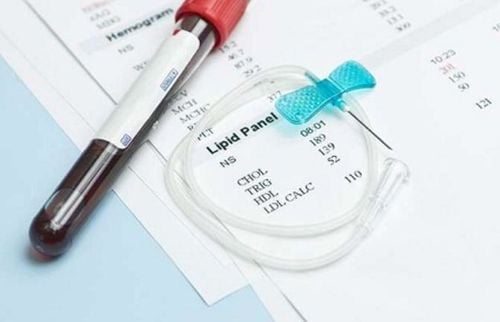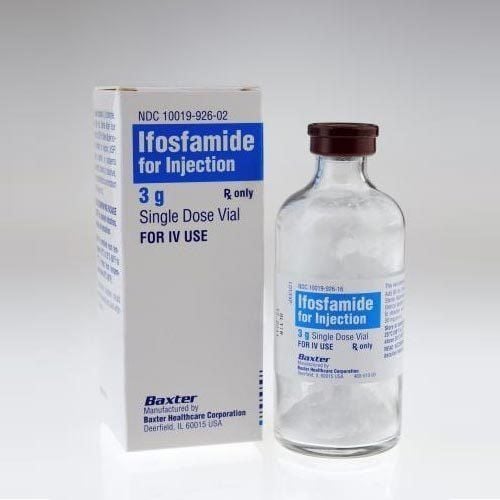This is an automatically translated article.
Regular men's health checkups as recommended by your doctor is an important step in helping you avoid the risk of developing chronic diseases such as cancer, heart disease, diabetes or kidney failure. Here are 10 health tests every man should take.
1. Lung cancer screening
Lung cancer is the leading cause of death for men, especially cases caused by smoking. Therefore, during the general health examination for men, doctors often recommend that patients perform lung cancer screening through low-dose CT scanning.
Low-dose CT scan, which uses X-rays to obtain images of the lungs, is most commonly used in men between the ages of 55 and 80 who have smoked regularly for many years. Subjects were considered heavy smokers when they smoked about 1 pack of cigarettes per day for 30 years, or 2 packs per day for 15 years.
Even people who have given up smoking are recommended to be screened for lung cancer to check for possible risks of developing the disease. According to experts, the best way to protect men's health against the risk of lung cancer is to not smoke and avoid exposure to secondhand smoke.
2. Early screening for prostate cancer
Prostate cancer is the most common cancer in men, second only to skin cancer. This is a type of cancer that tends to be slow-growing, but more aggressive than other types. Therefore, when examining male reproductive health, doctors often ask patients to perform screening tests to help detect prostate cancer early.
Screening for healthy men may include a digital rectal exam (DRE) or a prostate-specific antigen (PSA) test. However, men shouldn't have routine PSA testing, so it's important for patients to discuss the benefits and risks of this screening with their doctor thoroughly.
As recommended by the American Cancer Society, the following men should be screened for prostate cancer early, including:
Men in their 50s have an average risk of prostate cancer paralysis. 45-year-old men are at increased risk for prostate cancer, including African-Americans. 40-year-old man with a family history of prostate cancer.

Bác sĩ có thể chỉ định tầm soát sớm bệnh ung thư tuyến tiền liệt khi khám sinh lý nam
3. Testicular cancer screening
Testicular cancer is a less common form of cancer than others, mainly appearing in men aged 20 to 54. In general, testicular cancer is treatable if it is detected. early on. For this reason, testing the testicles is often considered an important part of a male physical exam.
Screening for testicular cancer in men usually includes methods that help check the size and shape of the testicles. This also helps the doctor detect abnormalities in the male testicles early and check for the growth of any tumors.
4. Colon Cancer Screening
According to the American Cancer Society, colon cancer is the second leading cause of death in men. Therefore, in men's general health exams, patients should go for colon cancer screening to detect the disease early, especially those who are at high risk for this dangerous type of cancer.
Colon cancer screening tests often include a colonoscopy, in which the doctor uses a thin tube with a small camera attached to it to examine the entire colon and help detect any abnormalities. polyp . In addition to a conventional colonoscopy, your doctor may also recommend a sigmoidoscopy to examine the lower part of the colon.
5. Screening for skin cancer
Skin cancer screening is an essential part of a men's general health checkup. Skin cancer often includes many types, the most dangerous of which is the malignant form, such as basal cell or squamous cell cancer. Risks that trigger the growth of skin cancer cells often include sunburn, overexposure to UV rays, or tanning.
Ideally, men should have regular skin checks to recognize any change in color, shape and size of birthmarks or moles on the skin early. Screening and early detection also help doctors provide more effective treatment.
6. Screening for high blood pressure
The risk of developing high blood pressure is often closely related to a person's age, sex, weight, and lifestyle. Many people already have high blood pressure without knowing its presence. When high blood pressure is screened and treated early, it can help avoid other potential risks like kidney failure, stroke, or heart disease.
When going to a male physiologist or general health check, you should take a blood pressure measurement to determine your blood pressure level. Measurement results will give 2 numbers, the first number is the pressure in the arteries when the heart beats and the other number is the pressure between heartbeats. Normal blood pressure would be < 120 / < 80, elevated blood pressure would be 12- - 129 / < 80, and stage 2 hypertension would be > 140 / ≥ 90.
7. Check cholesterol levels
As recommended by the American Heart Association, men over 35 years of age should have their cholesterol levels checked about every 5 years during their general male physical exam. In addition, you will also need to have a cholesterol test at age 20 if you have some of the following risk factors:
Regularly smoke. Have diabetes. Have a BMI over 30. Have a family history of stroke. Have a close relative with grade 1 kidney disease and have had a heart attack. To check cholesterol levels, the doctor will take a small blood sample from the patient's arm. Through the results, the doctor will determine the level of good cholesterol (HDL), bad (LDL) or triglycerides.
In general, cholesterol test results will be expressed in milligrams per deciliter of blood (mg/dL). A healthy cholesterol level should usually be below 200 mg/dL.

Khám sức khỏe tổng quát nam giới thông qua kiểm tra mức cholesterol
8. Type 2 diabetes screening
Many men have diabetes without even knowing they have this chronic disease. This may be due to the subjective attitude of some men not going to check their male reproductive health.
Type 2 diabetes if not well controlled can lead to heart disease, kidney disease, stroke, blindness, impotence and serious nerve damage. However, if detected early, high blood sugar can be effectively managed and possible complications prevented.
One of the common methods of screening for type 2 diabetes is the fasting blood sugar test. Your doctor may also use the A1C test to check your body's blood sugar control over time.
Healthy men should have these tests for diabetes about every 3 years and starting at age 45. People with high cholesterol and blood pressure should be screened for diabetes earlier and more often than others. other object.
9. HIV screening
HIV is the virus that causes AIDS in humans. It is capable of being transmitted from person to person through blood and other body fluids.
In the early stages of HIV infection, many people are unaware of its existence. If not detected and treated early, HIV will turn into AIDS, which is very dangerous to the patient's life. Therefore, during male sexual exams, doctors often recommend that patients perform blood tests to check for HIV.
The commonly used HIV test is ELISA (or EIA), which looks for antibodies against the HIV virus – the HIV virus in the blood. Another HIV test that can also be done is the Western blot test, which detects a person's exposure to HIV.
10. Glaucoma Screening
Glaucoma refers to a group of eye conditions that are associated with progressive damage to the optic nerve, increasing the risk of blindness. During men's general health exams, patients should have screening tests that look for high pressure in the eye and other signs of glaucoma, so that effective treatment can be taken before they can. progression and damage to the optic nerve.
Eye tests to screen for glaucoma will be chosen based on age and individual risk, specifically:
Men under 40 years old should have their eyes checked every 2-4 years. Men aged 40-54 should have an eye exam every 1-3 years. Men aged 55-64 should have an eye exam every 1-2 years. Men over 65 years old should have regular eye exams every 6-12 months. In addition, your doctor may also recommend that you start glaucoma screening earlier or have your eyes checked more often based on your specific risk factors.
Please dial HOTLINE for more information or register for an appointment HERE. Download MyVinmec app to make appointments faster and to manage your bookings easily.
Reference sources: healthline.com, webmd.com












